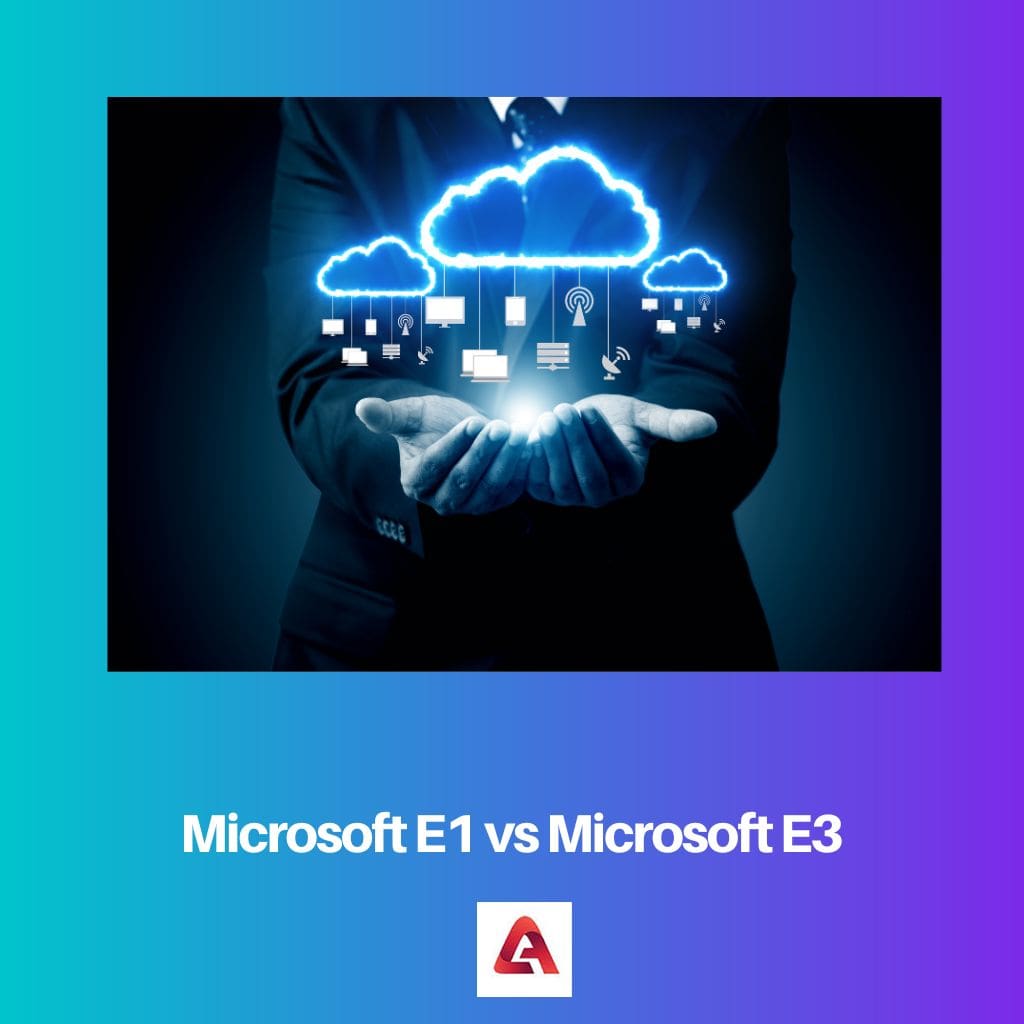For organizations, Microsoft Office 365 is the clear leader in cloud productivity suites, offering everything from Microsoft Office apps to cloud storage and email to instant messaging and video conferencing in one monthly subscription.
Key Takeaways
- Microsoft E1 offers basic cloud services, including email, file storage, and web-based Office apps.
- Microsoft E3 provides advanced features such as desktop versions of Office apps, advanced security, and compliance tools.
- Businesses choose between E1 and E3 based on their specific features, security, and budget needs.
Microsoft E1 vs Microsoft E3
Microsoft E1 is a basic Office suite plan for enterprises. It is only available on the web, where users can share files, send emails and store data, but with a lower level of security. Microsoft E3 is a tool for enterprises that comes with a full license to access Outlook, Excel and Word.

In addition to email and file storage and sharing with Microsoft Outlook, OneDrive also offers additional security features like multi-factor authentication, making it a good choice for small businesses.
Microsoft Office 365 E3 is the medium option for Office 365 subscribers, featuring all the functionality of E1 and the entire desktop suite of Office 365 programs, as well as more storage for email and SharePoint.
Comparison Table
| Parameters of Comparison | Microsoft E1 | Microsoft E3 |
|---|---|---|
| Mobility | No | Yes |
| Office 365 | Web-version | Desktop |
| Level of Security | Low | High |
| Voicemail | Unavailable | Available |
| Suitable for | 1 user | 5 users |
What is Microsoft E1?
Microsoft’s Office Suite (Word, PowerPoint, and Excel) is exclusively available over the web and on mobile devices in Microsoft E1.
You can use the calendar, contacts, and email archiving features. However, you won’t be able to use Outlook on your desktop because the desktop client is not available.
Office 365’s fundamental email security, Exchange Online Protection, guards against unauthorized access to your messages.
Users can exchange and collaborate on files using SharePoint and Yammer, which are provided (again, this is only possible on mobile or in the web version of Cloud Office applications).
What is Microsoft E3?
Microsoft E3 lacks Defender for Office 365’s increased email security functionality as well as audio-conferencing.
Email and file data loss prevention (DLP) is also provided. Email encryption and retention regulations, as well as audit logs and audit trails, are all included as standard features.
SharePoint comes with an unlimited amount of OneDrive storage for each user. All three of these tools are included. It does not include Power BI Pro.
Group policies that aren’t available in E1 can be managed by admins. Searching for content, eDiscovery, and basic auditing are all available.
Main Differences Between Microsoft E1 and Microsoft E3
- Microsoft E1 version is focused on the online version only, whereas the Microsoft E3 version comes with a full license to install the desktop version of Word, Excel, Outlook, etc.
- Microsoft E1 includes less business services than Microsoft E3.
The detailed comparison table is an excellent way to highlight the differences between Microsoft E1 and E3. This post is a must-read for anyone considering Office 365 plans.
I never really understood the differences between E1 and E3 until I read this article. It’s very clear and well-written.
The clarity provided in this post regarding Microsoft E1 and E3 is impressive. It really helps people see the distinctions between the two.
The clear comparison table makes it easy to understand the differences between Microsoft E1 and E3. This article is a valuable resource for businesses looking to choose the right plan.
This article offers a detailed comparison between Microsoft E1 and E3, providing a strong foundation for understanding the differences between the two plans. It’s a great resource.
The information presented in this article is very clear and insightful. It does a great job of breaking down the complex details of Microsoft E1 and E3.
The detailed information about Microsoft E1 and E3 is a valuable contribution to understanding the features and capabilities of each plan. This article is a great reference.
The level of detail in comparing both Microsoft E1 and E3 is truly informative and helpful for businesses to decide which plan is a better fit for their needs.
This post provides a comprehensive understanding of Microsoft E1 and E3, allowing readers to make informed decisions for their businesses. Great article.
I agree, the detailed comparison is very insightful. Microsoft E1 seems like a great starting point for businesses that need basic cloud services without all the advanced features.
The article does a great job of outlining the main differences between Microsoft E1 and E3. It’s a helpful guide for making an informed decision about the right choice for businesses.
The thorough comparison of Microsoft E1 and E3 provides valuable insights into the features and functionalities of both. The clarity of the information is commendable.